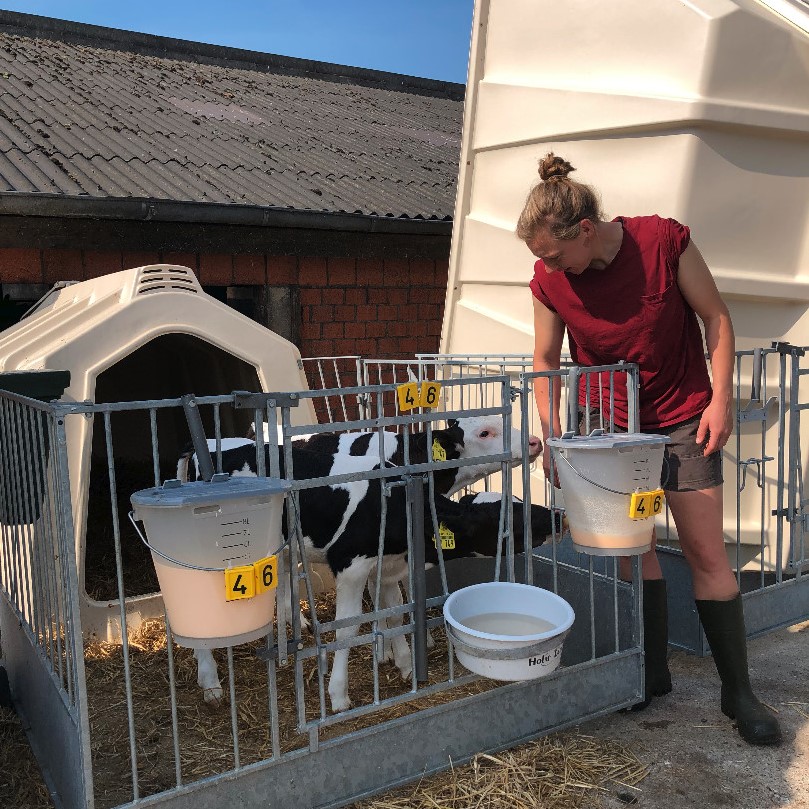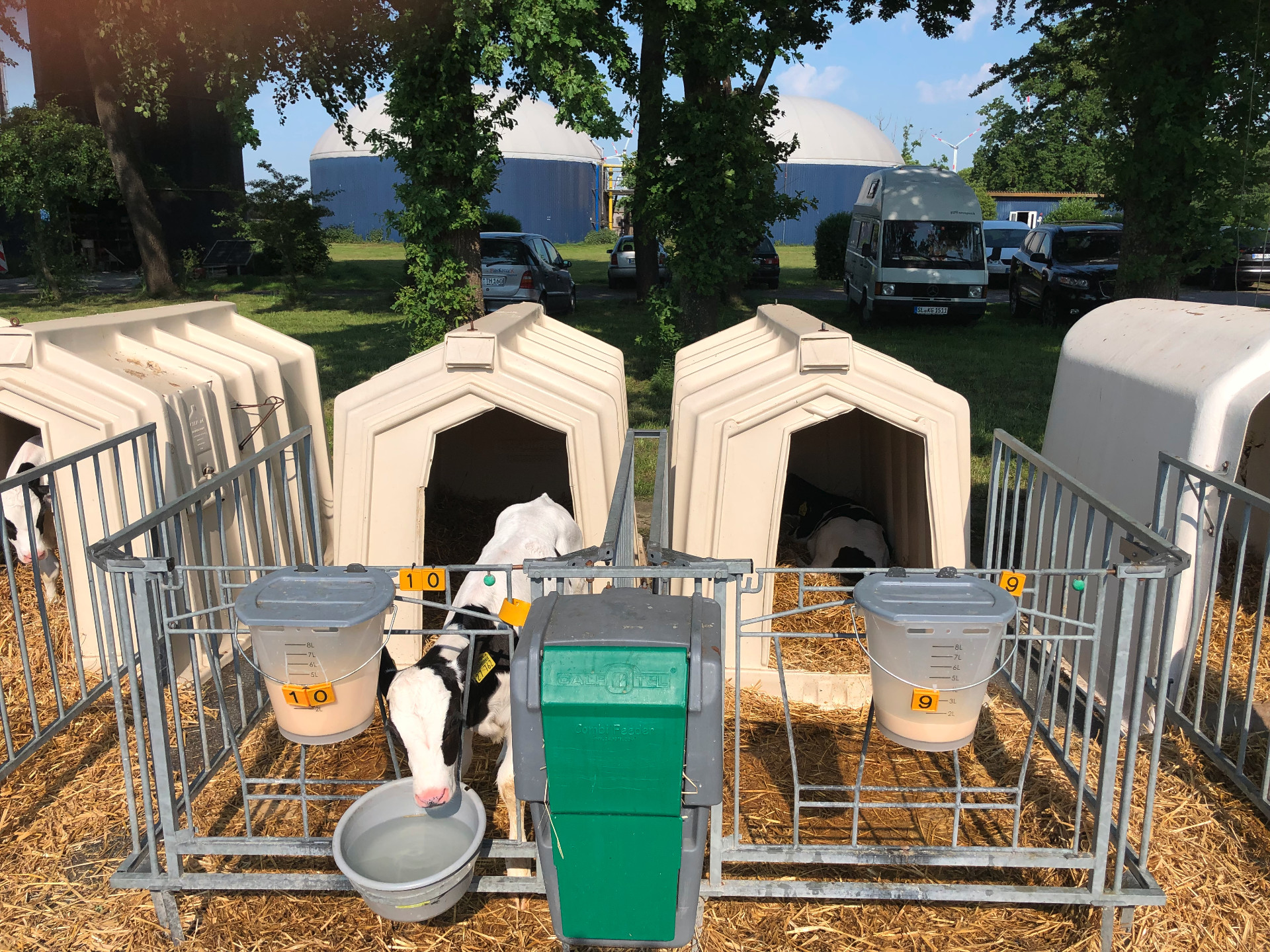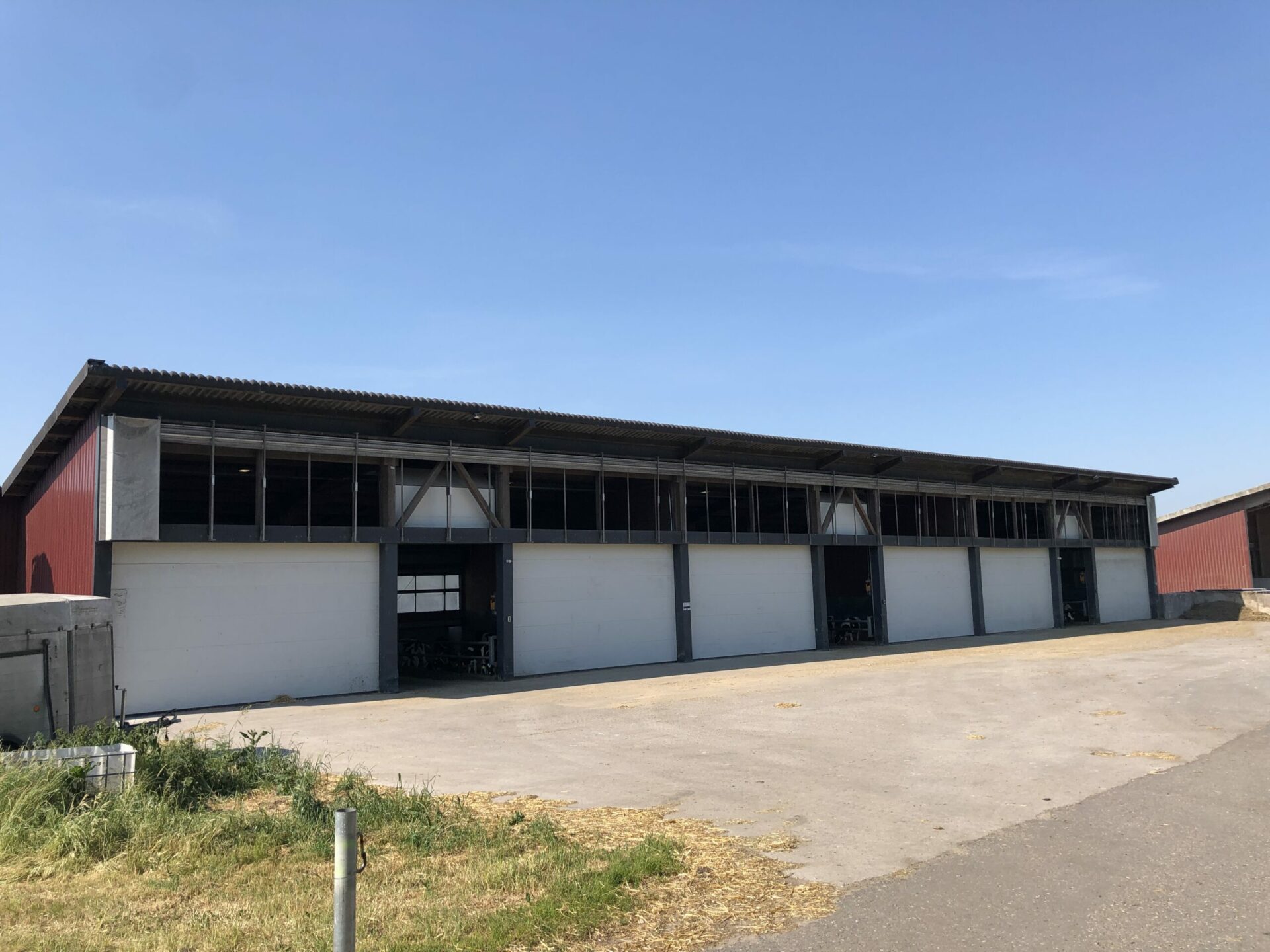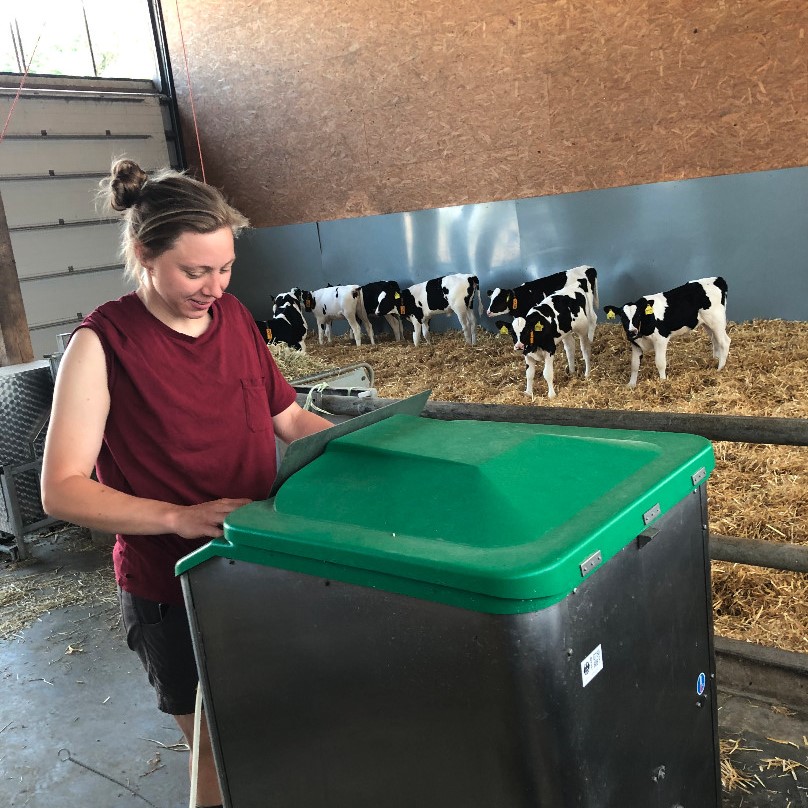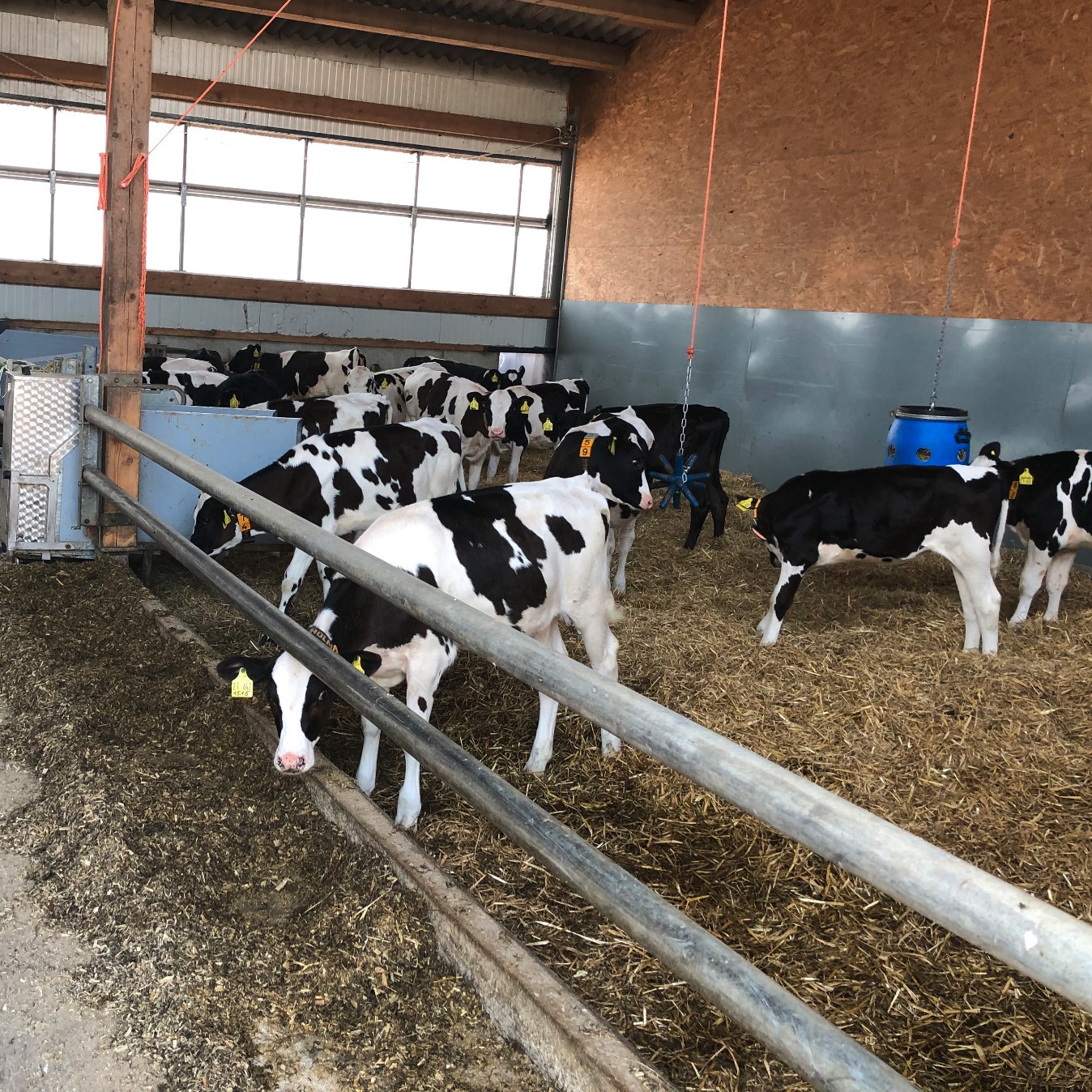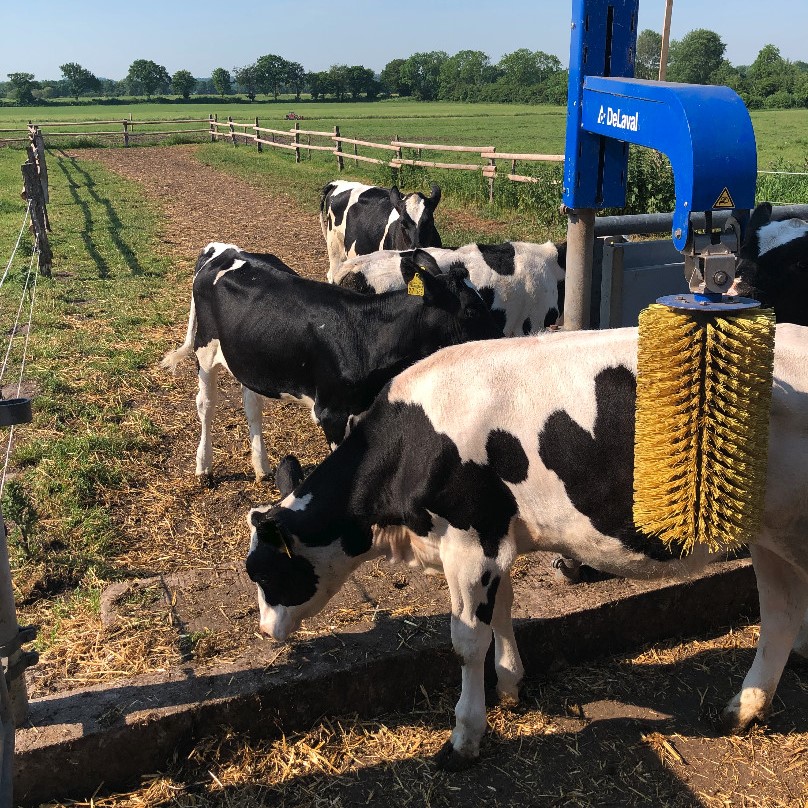Backensholz Farm shows how organic husbandry works for calves
15. Oktober 2021 — General Information, Biological, Calf Feeding, Calf Husbandry, Calf management, Practice report, Products — #Colostrum #coloQuick #Ecological calf husbandry #Pair #Practice report #Calf feeder #TwinHutch #Whole milkPerhaps you're wondering what to watch out for when feeding adlibitum or whole milk and why keeping calves in pairs is not such a bad idea after all. And how you can improve colostrum management. We clarify all this in the following blog post based on the example of the Backensholz organic farm.
This article is about
- Raising calves in TwinHutches/with pair housing
- Adlibitum feeding
- Whole milk feeding with the Holm & Laue calf feeder
- A functioning calf pen for group housing with an outdoor run
- Colostrum management with the coloQuick system
When you travel to North Friesland, you expect a fresh breeze, wide open spaces and a little salty air. But that's by no means all: there are great farms here that are well worth a look. One of them is "Backensholz Farm" owned by the Metzger-Petersen family.
At Metzger-Petersen, a high level of competence and passion coupled with innovative thinking deliver animal welfare and super results. Our aim in the following article is to explain to you in more detail what makes the business so special and what impresses us so much about it. Have fun reading!
First, a few introductory words about the farm.
Metzger-Petersen has been an organic farm since the late 1980s. Animal welfare and species-appropriate husbandry are topics that continue to gain in importance – and these issues are being discussed in great detail, especially in the public domain. Farmers and consumers need to address this issue in depth. Organic farming is very much in line with the standards demanded by society in many respects. And this is the goal the farm has set itself.
Around 460 cows are milked here, and what makes it special is that all the milk is processed into cheese in the farm's own cheese dairy. The cheese is sold in the farm shop and restaurant, along with many other products.
Of course, what interests us most are not necessarily the cows – our passion is focused on the calves and how they are reared.
The calves on Backensholz Farm are initially raised in pairs in Holm & Laue TwinHutches. The calves feel at home with adlibitum feed and their best friend in the hutch. "It's incredible what a bond the calves form with each other. They often remain inseparable even after their time in the TwinHutch," explains herd manager Mary-Katherine Jones, MK for short.
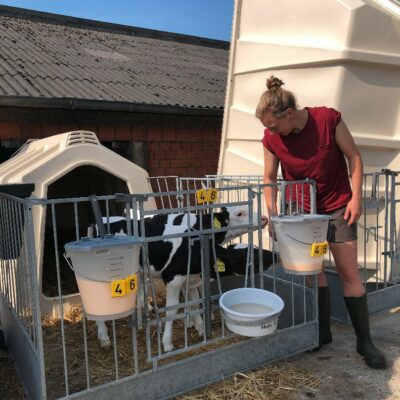
The TwinHutch has enough space for both calves and the large hatch at the back of the calf hutch ensures good ventilation. The calves spend their first three weeks at Metzger-Petersen in the TwinHutch. "We have less than 1% loss during rearing with the hutches and very few to no health problems," MK said. Bacterial load in the TwinHutches is also much lower than in larger groups of calves. In larger groups, calves keep following and the barns are almost continuously occupied. "It is different with the TwinHutches: the groups of two remain constant and then leave the calf hutch together. We can muck out and have plenty of time before restocking and for adequate disinfection.”
Cross sucking and drinking away each other's milk is also a problem for Metzger-Petersen. "But it really does stay within limits and when we move to the big group later, we have lots of toys and distractions for the calves to counteract this," calf manager Solveig tells us.
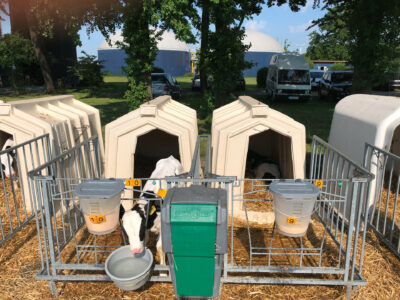
However, the farm has an ingenious solution if, for some reason, one calf is clearly disadvantaged by the other and does not get enough milk: they place two Holm & Laue single hutches next to each other, remove a few poles of the FlexyFence, thereby creating a connecting passage for the calves. The opening can then easily be closed again using a plank, e.g. when the buckets are being refilled - simple but clever.
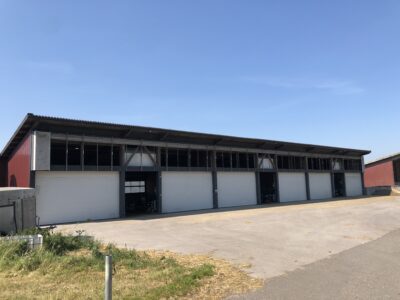
After their time in the TwinHutch, the calves move to the new calf barn. This was completed in 2018 and fully complies with organic regulations, providing whole milk feeding and a large run out onto the pasture.
The calf barn is divided into three segments, each with two stalls. Up to 20 calves are kept on straw in the pens. The calves in segments one and two receive their whole milk from an H&L 100 calf feeder with two HygieneStations. The calves are weaned in the third compartement.
The calf feeder is supplied with milk from a separate tank located next to the calf barn; it holds around 3,000 litres and has its own cooling system. The H&L 100 allocates rations to each individual calf based on the feeding curve.
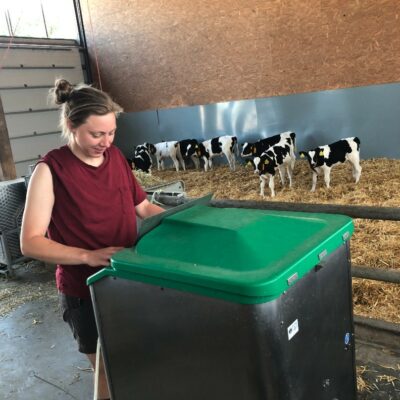
The farm keeps a close eye on its calves. "We really like working with the calf scales in the HygieneStation. We can see exactly which calf is gaining weight and how well, or sometimes less well, and can interpret the data and act accordingly. We also want to develop using the CalfGuide management tool in the future. This will then give us an even better overview of the whole group," says Solveig.
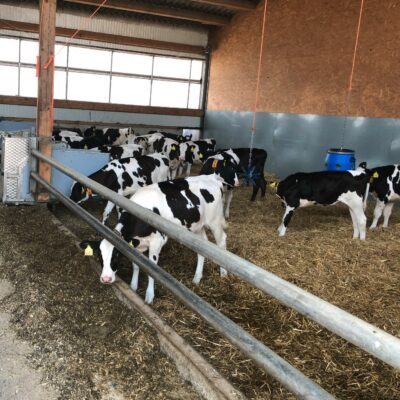
The toys and distractions for the calves already mentioned have also found their place in the new barn. There is a barrel of hay with holes in it and a toy hedgehog hanging from the ceiling.
A calf barn is only as good as its climate. A high pitched roof and built-in blinds enable a regulated exchange of air and soon a pipe ventilation system will further improve the climate in the barn.
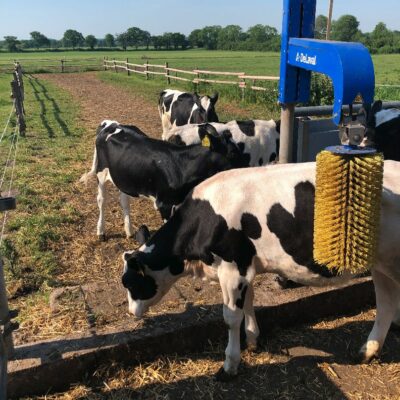
And the calves are not only allowed to feel comfortable indoors; at Backensholz Farm they even go outside. Each segment has its own run out to the meadow. The calves can leave the barn and enter the outdoor area through a windbreak. Three rubber louvres keep out most of the wind and the rest is intercepted by a narrow passage to the interior. Outside, a small forecourt with a concrete floor and cow brush awaits the animals, with a large piece of green meadow adjoining it.
But anyone rearing calves knows the task of raising a healthy calf begins as soon as the animal is born. And colostrum feeding plays a crucial role in ensuring that our little ones stay healthy and develop well as they grow up.
The organic farm also recognised this a long time ago. However, herd manager MK in particular was not always entirely satisfied with the way colostrum was fed on the farm. "We used to bottle the colostrum and store it in a fridge until it was almost bursting at the seams. The milk was only cooled and then brought to about the right temperature in a water bath. All in all, it was difficult to maintain an overview.” Then the farm opted for the ColoQuick and MK is now very satisfied: "Colostrum is very sensitive and does not keep long. This now plays a much smaller role, as we can freeze it in the ColoQuick. We can now use the milk when we need it and it is then heated to the optimum temperature. Colostrum feeding thus works perfectly because the refractometer gives us much better control of the quality and we know exactly what we are giving our little ones."
At the end of our visit to the farm, we made a detour to the farm shop to taste the wonderful cheese (a real treat!) and to sample the restaurant. Click here if you are interested in learning more: https://www.hofkueche-backensholz.de
The visit to Backensholz Farm was extremely fascinating and impressive. In particular, the team's high level of expertise and passion will stay in our minds. When we ask Solveig and MK for a final statement, Solveig simply answers: "I can't understand why every farm doesn't switch to organic," she says, looking proudly at her calves. We will leave that without comment and would like to thank you very much for your time and the friendly conversation.
What do you think: Is organic farming the future? Would it also be something for your business? What can you take away from this article?

